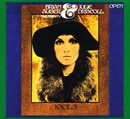From the 33rd edition of “XXth Century Health And Pleasure Resorts Of Europe” published in 1933
Travel a hundred miles an hour in comfort. Roads forty feet wide…… Perfect surface…… No level crossings, cross-roads or villages….. Long lines of flood-lit surface at night….. Europe a network of perfect roads….. Is all this simply a vision of the future? It may be so, but the means to make this vision a reality exist. Such roads can be built, and what is more can be made to pay. Capital and labour are there; the demand for such roads exists; only enterprise is lacking to create a. vast network of specially built motor roads linking up all the main points in Europe. Various plans have been prepared, but what is wanted is a co-ordinated and uniform European system and not only odd disconnected stretches of special roads. Recently an International Bureau of Motor Roads has been set up with headquarters in Geneva to promote the idea and to co-ordinate the plans which have been made. This Bureau has issued a map of the roads it considers would constitute a rational European network to Governments, Automobile Clubs and other interested Associations, asking them for their comments and suggestions."
It is contemplated that such roads would consist of two tracks each twenty feet wide separated by a low wall from which the surface would be flood-lit at night. All passages through towns and villages, over level crossings and so forth, would be eliminated. Cross-roads would no longer exist, bridges being built over other roads: At the same time the streak of light constituted by such roads at night would be a guide to aircraft.
Already a few such roads exist in Italy (Milan to the Lakes, Milan-Bergamo, Milan-Turin, Naples-Pompeii, etc.). These have yielded regular dividends on the capital invested. It is calculated that a charge of a penny per mile for small cars would be enough. Complete plans exist for building such roads from Calais to Paris and from Paris to Lille. On such flat ground there would only be a slight turn in every twenty-miles or so. A Toad from Hamburg to Basle which would later continue through to Italy is also planned. A company has been formed to build a special road from ·Evian to Geneva and Lyons and from Geneva to Besancon, Important interests are desirous of driving a tunnel under Mont Blanc from Les Houches in the Chamonix Valley to Courmayeur, thus providing the only motor road other than the Riviera one linking Western Europe to Italy throughout the year without shipping cars by train through the tunnels. Will Great Britain join in by a Channel tunnel for cars? Who knows! Probably our very up-to-date strategists might consider that such a tunnel would endanger Britain’s natural defences.
Of course objections at once occur to the mind; the sceptic may ask: "Is there really any demand for such horrible roads and this dreadful speed?" Anyone who has motored in some parts of the Continent will promptly reply that, speed or no speed, the danger of killing dogs and running into old women, the tediousness of mud and bumps, will amply justify the building of such roads.
Could capital be obtained? Masses of savings are lying in bank deposit accounts seeking a safe investment. Yet – but would it be a safe one? Perhaps Government guarantees forinterest might be obtained. The State stands to gain by such roads being built. – And the cost? The cost of building a network of these roads could be met in about 20 years by a charge equivalent to one penny (gold) per gallon of petrol at present consumed in Europe. If the nineteenth century could find capital for railways, cannot the twentieth provide capital for such roads which would cost much less per mile to build? – Labour? Now is the time to build. Millions of unemployed in Europe ask no better than to be given a chance to work. In times of prosperity such work may not be required, but who can deny that a big enterprise of this nature in a time of depression is just what is wanted to encourage weary industries and enable the worker to consume more, thus setting the wheels of trade going again. The motorist will prove that the demand exists by being ready to pay for the facilities offered.
Such co-ordinated work would be one of the best means of breaking the" vicious circle" of under consumption and unemployment of the factors of production prevailing at present, and would have the additional advantage of welding dis-united Europe into something more like unity.
Filed under: Article, Facts, Holidays, The thirties, Traveling Tagged: 1933, Europe, Roads, The continent



































































 Herbert
Herbert Nell Gwynne
Nell Gwynne


























 Centipede
Centipede




















